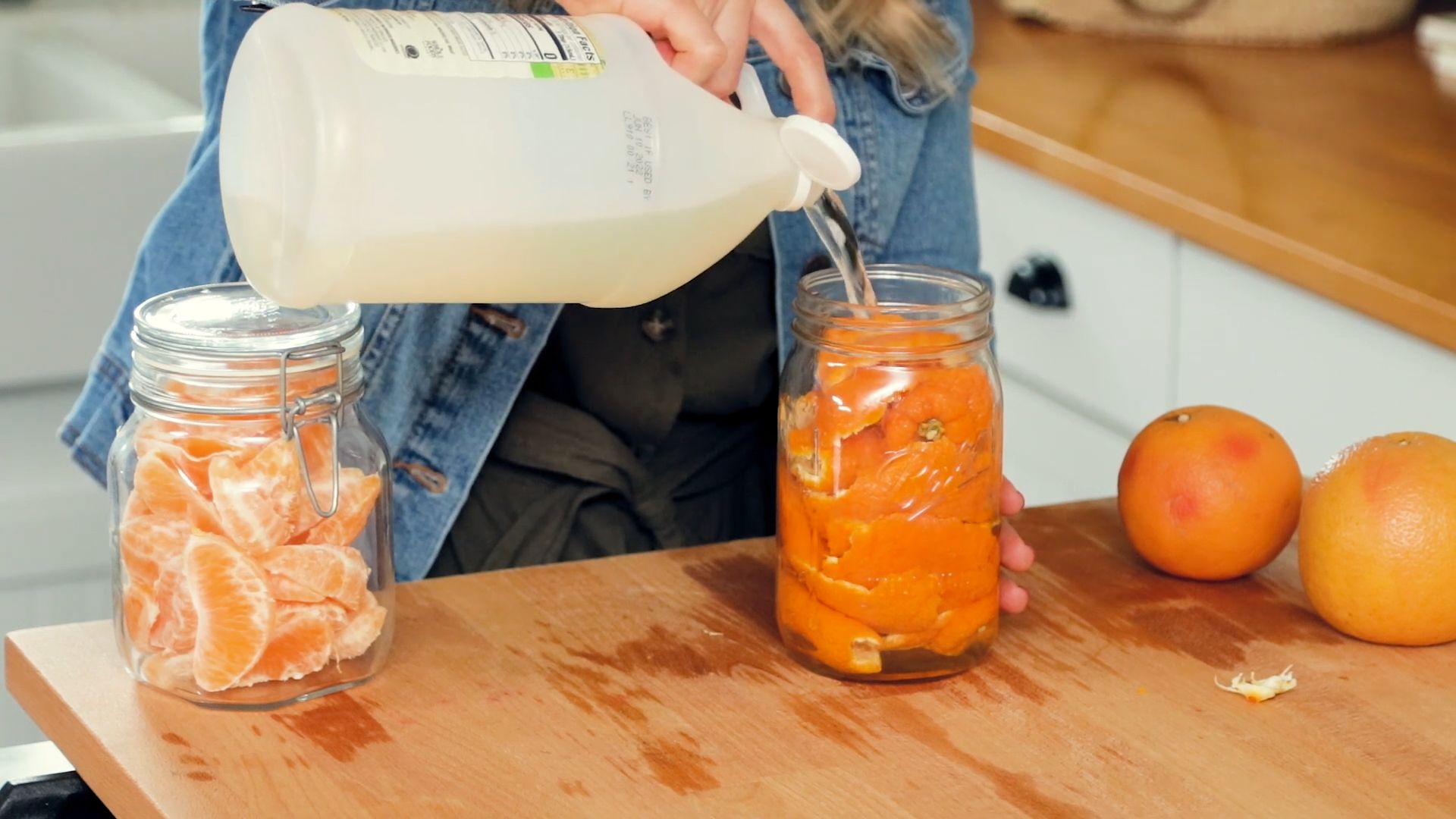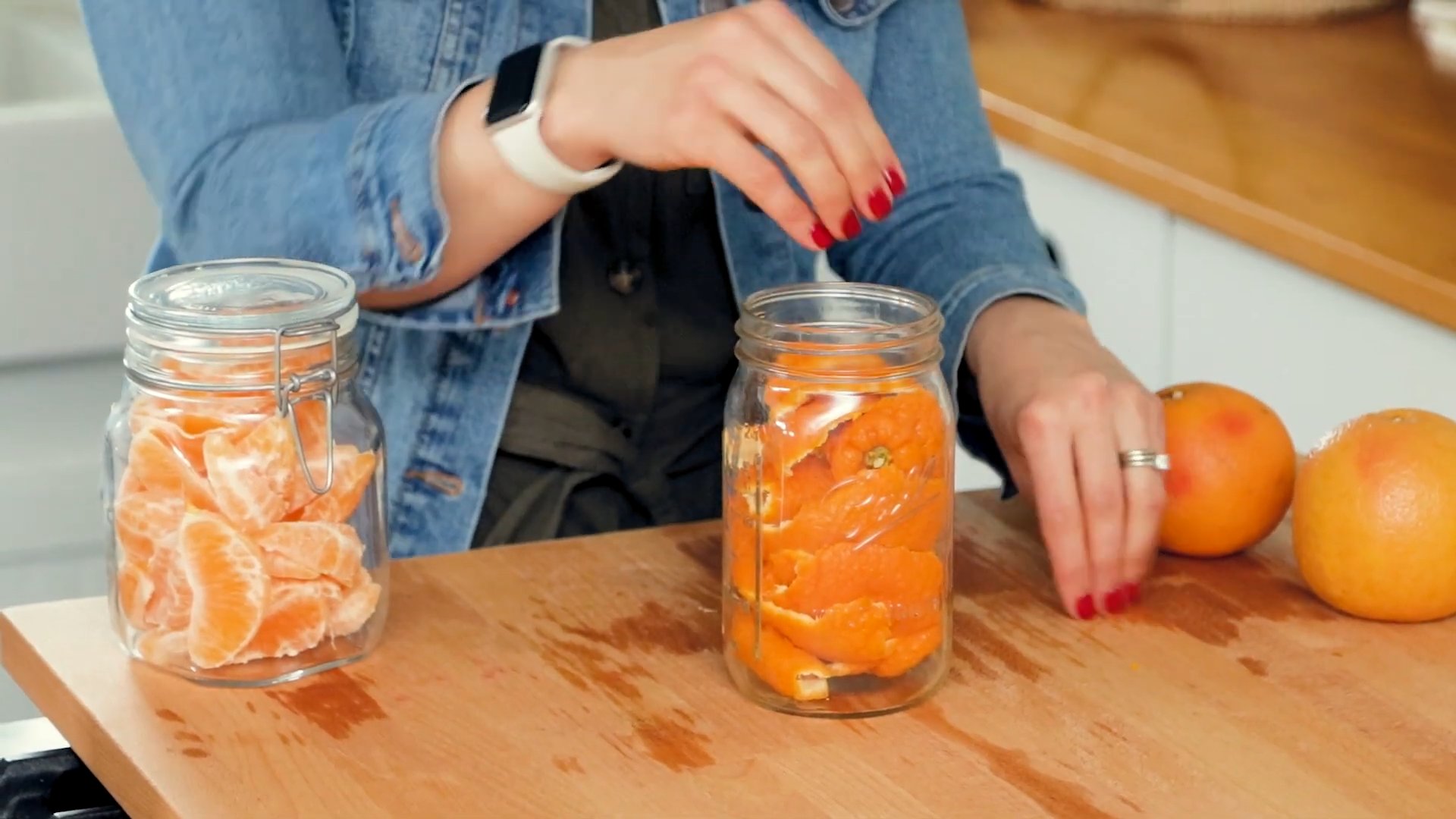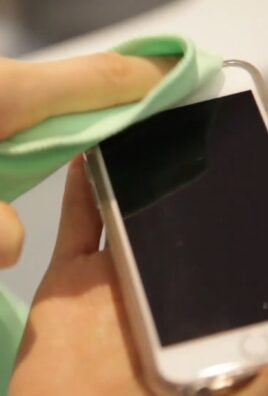DIY Citrus Air Freshener: Are you tired of those artificial, chemical-laden air fresheners that promise a fresh scent but leave you with a headache? I know I am! There’s something truly special about creating a welcoming and fragrant home environment using natural ingredients, and that’s where this simple yet effective DIY project comes in.
The use of citrus for fragrance and cleansing has deep roots in many cultures. From ancient rituals involving citrus fruits for purification to traditional potpourri recipes passed down through generations, the bright and uplifting aroma of citrus has always been cherished. Think about it – the zesty scent of lemons and oranges instantly evokes feelings of cleanliness, energy, and happiness.
In today’s world, where we’re increasingly conscious of the products we bring into our homes, a DIY Citrus Air Freshener offers a fantastic alternative. Not only is it incredibly easy to make with ingredients you likely already have in your kitchen, but it’s also a sustainable and budget-friendly way to keep your home smelling fresh and inviting. Plus, you’ll avoid all those nasty chemicals found in commercial air fresheners. Ready to ditch the artificial scents and embrace the natural power of citrus? Let’s get started!

DIY Citrus Air Freshener: A Zesty Way to Freshen Your Home
Okay, let’s ditch those chemical-laden air fresheners and create our own natural, citrusy goodness! This DIY project is super easy, customizable, and smells absolutely amazing. Plus, you probably already have most of the ingredients lying around. I’m going to walk you through a few different methods, so you can choose the one that best suits your needs and preferences.
Method 1: Simmer Pot Magic
This is probably the easiest and most immediate way to get that citrus scent wafting through your home. It’s perfect for when you need a quick refresh before guests arrive or just want to create a cozy atmosphere.
What you’ll need:
* Citrus fruits (oranges, lemons, limes, grapefruits – mix and match!)
* Spices (cinnamon sticks, cloves, star anise)
* Herbs (rosemary, thyme, bay leaves) – optional
* Water
* A saucepan or small pot
Step-by-step instructions:
1. Prepare your citrus: Slice your citrus fruits into rounds or wedges. You can use the peels too! Don’t worry about making them perfect; the goal is to release those fragrant oils. I usually use a combination of orange and lemon for a bright, uplifting scent.
2. Combine ingredients in the pot: Place the sliced citrus, spices, and herbs (if using) into your saucepan. I love adding a couple of cinnamon sticks and a few cloves for a warm, comforting aroma, especially during the fall and winter.
3. Add water: Pour enough water into the pot to cover the ingredients. You don’t want it to boil dry!
4. Simmer gently: Bring the mixture to a simmer over low heat. You should see gentle bubbles forming, but it shouldn’t be a rolling boil.
5. Enjoy the aroma: Let the mixture simmer for as long as you like, adding more water as needed to prevent it from drying out. The scent will fill your home beautifully. I usually simmer mine for a few hours, checking on it periodically.
6. Safety first: Never leave a simmering pot unattended. Make sure to turn off the heat when you leave the house or go to bed.
Method 2: Citrus Peel Infused Vinegar Cleaner
This method is a two-for-one deal! You get a fantastic smelling air freshener *and* a natural cleaner. Vinegar is a great disinfectant and deodorizer, and the citrus peels mask the vinegar smell beautifully.
What you’ll need:
* Citrus peels (orange, lemon, lime, grapefruit)
* White vinegar
* A glass jar with a lid
* A spray bottle
Step-by-step instructions:
1. Collect your citrus peels: After you eat your oranges, lemons, or limes, don’t throw away the peels! Instead, save them in a container in the fridge until you have a good amount. Make sure the peels are relatively clean.
2. Prepare the jar: Make sure your glass jar is clean and dry.
3. Pack the jar with peels: Stuff the citrus peels into the jar, packing them in tightly. The more peels you use, the stronger the citrus scent will be.
4. Pour in the vinegar: Pour white vinegar over the peels, making sure they are completely submerged.
5. Seal and infuse: Seal the jar tightly with the lid and place it in a cool, dark place for at least two weeks, or even longer for a stronger scent. I usually let mine sit for a month.
6. Strain the vinegar: After the infusion period, strain the vinegar through a cheesecloth or fine-mesh sieve to remove the peels.
7. Dilute (optional): You can use the infused vinegar undiluted, or you can dilute it with water in a spray bottle. I usually dilute it 1:1 (one part vinegar to one part water).
8. Spray and enjoy: Pour the infused vinegar into a spray bottle and use it to freshen the air in your home. You can also use it to clean surfaces like countertops, sinks, and floors. Just be careful on natural stone surfaces, as vinegar can etch them.
Method 3: Citrus & Baking Soda Odor Absorber
This method is great for tackling lingering odors in specific areas, like the fridge, bathroom, or closet. Baking soda is a natural odor absorber, and the citrus adds a refreshing scent.
What you’ll need:
* Citrus fruit (orange, lemon, grapefruit)
* Baking soda
* A small jar or container
* A nail or skewer
Step-by-step instructions:
1. Prepare the citrus: Cut the citrus fruit in half. I prefer using oranges or grapefruits for this method because they have a wider surface area.
2. Scoop out the pulp: Carefully scoop out the pulp from the citrus halves, leaving the rind intact. You can use a spoon or a knife to do this.
3. Poke holes in the rind: Using a nail or skewer, poke several holes in the rind of the citrus halves. This will allow the scent to escape.
4. Fill with baking soda: Fill the citrus halves with baking soda.
5. Place in desired location: Place the citrus halves in the area you want to freshen up. I usually put one in the fridge to absorb food odors and another in the bathroom.
6. Replace as needed: The baking soda will absorb odors for a few weeks. Replace the citrus halves and baking soda when they start to lose their scent or become discolored.
Method 4: Citrus Essential Oil Diffuser Blend
If you’re an essential oil enthusiast like me, this is a fantastic way to incorporate citrus into your aromatherapy routine. It’s quick, easy, and you can customize the blend to your liking.
What you’ll need:
* Essential oils (orange, lemon, grapefruit, lime, bergamot)
* A diffuser
* Water
Step-by-step instructions:
1. Choose your oils: Select your favorite citrus essential oils. Orange and lemon are great for uplifting and energizing, while grapefruit and bergamot are more calming and grounding. I often mix a few different oils for a more complex scent.
2. Add water to your diffuser: Fill your diffuser with water according to the manufacturer’s instructions.
3. Add essential oils: Add a few drops of each essential oil to the diffuser. I usually start with 3-5 drops of each oil, but you can adjust the amount to your preference.
4. Diffuse and enjoy: Turn on your diffuser and enjoy the refreshing citrus aroma.
Some of my favorite citrus diffuser blends:
* Sunshine Blend: 3 drops orange, 2 drops lemon, 1 drop grapefruit
* Citrus Burst: 4 drops lime, 2 drops bergamot
* Morning Zest: 3 drops lemon, 2 drops rosemary
Tips and Tricks for Maximum Citrus Freshness
* Don’t be afraid to experiment: Try different combinations of citrus fruits, spices, and herbs to create your own unique scents.
* Use high-quality ingredients: The better the quality of your citrus fruits and essential oils, the stronger and more authentic the scent will be.
* Consider the season: Use seasonal citrus fruits for the freshest and most vibrant scents.
* Repurpose your citrus peels: Don’t let those peels go to waste! Use them in your simmer pots, vinegar cleaner, or baking soda odor absorbers.
* Store essential oils properly: Keep your essential oils in a cool, dark place to preserve their potency.
* Safety with essential oils: Always dilute essential oils before applying them to your skin. Avoid using certain essential oils if you are pregnant, breastfeeding, or have any medical conditions. Consult with a qualified aromatherapist for personalized advice.
* Adjust the intensity: If the scent is too strong, use less citrus or dilute the vinegar cleaner further. If the scent is too weak, use more citrus or add more essential oils.
* Keep it fresh: Replace your simmer pot ingredients every day or two. Replace your baking soda odor absorbers every few weeks. Refill your diffuser with fresh water and essential oils as needed.
* Combine methods: You can even combine different methods for a multi-layered approach to air freshening. For example, you could simmer a pot of citrus while also using a citrus essential oil diffuser.
I hope you enjoy these DIY citrus air freshener methods! They’re a fun, easy, and natural way to keep your home smelling fresh and inviting. Happy freshening!

Conclusion
So, there you have it! Creating your own DIY citrus air freshener is not only incredibly simple and cost-effective, but it’s also a fantastic way to banish those stale odors and infuse your home with a bright, uplifting, and all-natural fragrance. Forget about harsh chemicals and artificial scents – this method allows you to control exactly what goes into your air freshener, ensuring a safe and healthy environment for you, your family, and even your pets.
The beauty of this DIY project lies in its versatility. While we’ve focused on citrus, don’t be afraid to experiment with different combinations of fruits, herbs, and spices to create your signature scent. Imagine a blend of grapefruit and rosemary for a revitalizing morning boost, or perhaps a calming combination of orange and lavender for the bedroom. You could even add a few drops of your favorite essential oils to further customize the aroma and reap the therapeutic benefits. Think about adding cloves or cinnamon sticks for a warm, spicy scent perfect for the fall and winter months. For a more floral aroma, consider adding dried rose petals or lavender buds to your citrus mixture.
Beyond the scent variations, you can also play around with the presentation. Use decorative jars or bottles to create visually appealing air fresheners that complement your home décor. Tie a ribbon around the neck of the jar or add a personalized label for a touch of elegance. These DIY citrus air fresheners also make thoughtful and unique gifts for friends and family. Imagine gifting a beautifully packaged jar of homemade air freshener – a personal and practical present that shows you care.
The environmental benefits are undeniable. By making your own air freshener, you’re reducing your reliance on commercially produced products that often come in plastic packaging and contain harmful chemicals. You’re also repurposing citrus peels that would otherwise end up in the landfill, contributing to a more sustainable lifestyle. It’s a win-win situation for you and the planet!
We truly believe that once you try this simple DIY trick, you’ll never go back to store-bought air fresheners. The fresh, natural scent, the cost savings, and the satisfaction of creating something yourself are simply unbeatable.
So, what are you waiting for? Gather your citrus peels, grab a jar, and get ready to transform your home into a fragrant oasis. We’re confident that you’ll love the results.
We’d love to hear about your experience! Share your own variations, tips, and photos of your DIY citrus air fresheners in the comments below. Let’s inspire each other to create healthier and more fragrant homes, one citrus peel at a time. Don’t forget to tell us what your favorite scent combinations are! Your feedback is invaluable and helps us improve our recipes and provide even more helpful tips for our readers. Happy freshening!
Frequently Asked Questions (FAQ)
1. What types of citrus fruits work best for this DIY air freshener?
Almost any citrus fruit will work well! Oranges, lemons, limes, grapefruits, and tangerines are all excellent choices. You can even mix and match different citrus fruits to create unique scent combinations. Experiment to find your favorite blend. The key is to use fresh peels that still contain their essential oils. Older, dried-out peels won’t release as much fragrance.
2. How long does a DIY citrus air freshener last?
The lifespan of your DIY citrus air freshener will depend on several factors, including the humidity in your home and the type of citrus fruits you use. Generally, you can expect it to last for about 1-2 weeks. You’ll know it’s time to replace the peels when the scent starts to fade or the peels begin to look discolored. To prolong the life of your air freshener, keep it away from direct sunlight and heat sources. You can also add a splash of vodka or rubbing alcohol to the mixture, which will help to preserve the citrus peels and prevent mold growth.
3. Can I use essential oils in addition to citrus peels?
Absolutely! Adding essential oils is a great way to customize the scent and enhance the therapeutic benefits of your DIY air freshener. Citrus essential oils like orange, lemon, and grapefruit are natural complements to the citrus peels. You can also experiment with other essential oils like lavender, eucalyptus, peppermint, or rosemary to create different scent profiles. Start with a few drops of essential oil and add more to your liking. Be sure to use high-quality, pure essential oils for the best results.
4. Is this DIY air freshener safe for pets and children?
Yes, this DIY air freshener is generally safe for pets and children, as it uses natural ingredients. However, it’s always a good idea to keep the jar out of reach of small children and pets to prevent them from ingesting the citrus peels or the water mixture. If you’re using essential oils, be sure to research their safety for pets and children, as some essential oils can be toxic to animals. When in doubt, consult with your veterinarian or pediatrician.
5. How do I prevent mold from growing in my DIY air freshener?
Mold growth is a common concern with DIY air fresheners, as the citrus peels are organic matter that can decompose over time. To prevent mold growth, make sure to use clean jars and utensils when preparing your air freshener. You can also add a splash of vodka or rubbing alcohol to the water mixture, as these substances have antimicrobial properties. Regularly check your air freshener for signs of mold growth, such as discoloration or a musty odor. If you notice any mold, discard the entire mixture and start fresh.
6. Can I use dried citrus peels instead of fresh ones?
While fresh citrus peels are ideal for this DIY project, you can use dried citrus peels in a pinch. However, keep in mind that dried peels won’t release as much fragrance as fresh peels. To use dried peels, you may need to use a larger quantity and soak them in water for a longer period of time to rehydrate them and release their scent. You can also try simmering the dried peels in water on the stovetop to create a more potent aroma.
7. What other ingredients can I add to my DIY citrus air freshener?
The possibilities are endless! You can add a variety of other ingredients to your DIY citrus air freshener to customize the scent and appearance. Some popular additions include:
* Fresh herbs like rosemary, thyme, or mint
* Spices like cinnamon sticks, cloves, or star anise
* Vanilla extract
* Dried flowers like lavender or rose petals
* Pine needles (for a festive winter scent)
* Small pebbles or decorative stones (for visual appeal)
8. Where is the best place to put my DIY citrus air freshener?
You can place your DIY citrus air freshener in any room of your home that you want to freshen up. Popular locations include:
* Bathrooms
* Kitchens
* Living rooms
* Bedrooms
* Entryways
* Offices
Avoid placing your air freshener in direct sunlight or near heat sources, as this can cause the citrus peels to dry out and lose their scent more quickly.
9. Can I use this DIY air freshener in my car?
Yes, you can use this DIY air freshener in your car, but you’ll need to take some precautions to prevent spills. Use a small, airtight container with a lid to hold the citrus peels and water mixture. Make sure the container is securely placed in a cup holder or other stable location to prevent it from tipping over while you’re driving. Be aware that the scent may be more concentrated in a small space like a car, so you may want to use a smaller amount of citrus peels.
10. How can I dispose of the citrus peels after they’ve lost their scent?
Once the citrus peels have lost their scent, you can dispose of them in your compost bin or garden. Citrus peels are a great addition to compost, as they add nutrients to the soil and help to deter pests. You can also bury the peels directly in your garden to enrich the soil. Alternatively, you can simply throw the peels away in your trash can.





Leave a Comment